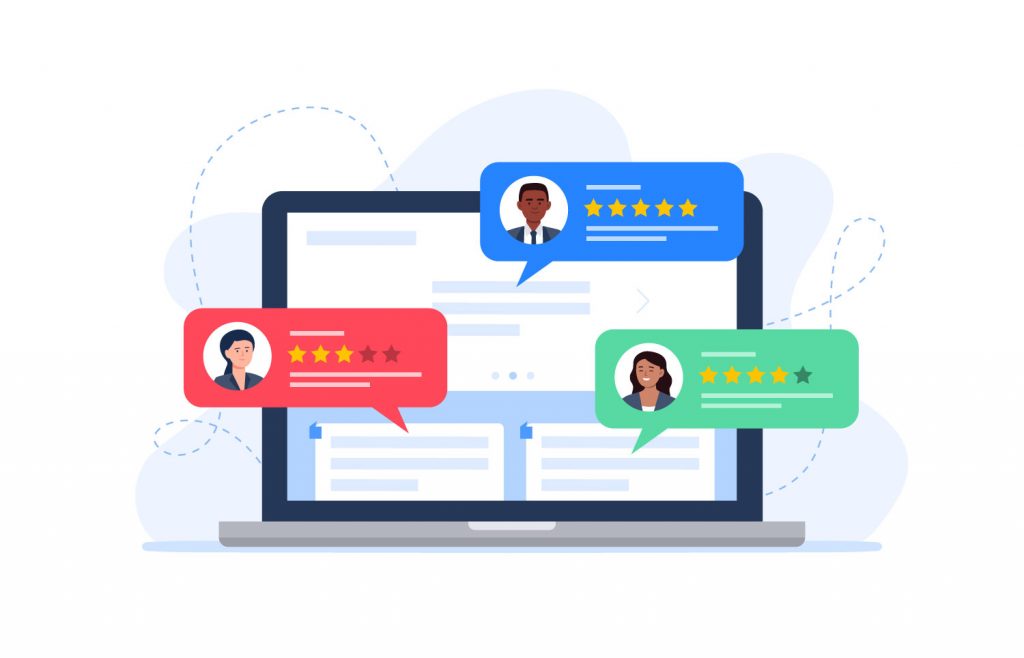Whether you are the owner of a small service business or the manager of a multi-location dealership, understanding your target audience plays a critical role in your marketing and sales tactics. From understanding how your audience researches products and services to what values push them to make their final purchasing decision, it is impossible to increase profits without first understanding your customers.
While knowing insights into your audience has always been essential, this data’s value is only increasing. Gone are the days of mass marketing campaigns and sales tactics that blanketed swaths of potential customers. Instead, today, companies are providing highly targeted and specialized marketing strategies to reach customers on a personal level. As this becomes the new norm, customers are learning to require it. In fact, according to recent data from McKinsey & Company, an incredible 71% of consumers expect companies to deliver personalized interactions. Not only that, but 76% of these consumers state that they become frustrated when this doesn’t happen.
Don’t miss out on important sales or waste another marketing dollar with poor customer data. Instead, implement the following seven strategies to gather meaningful data on your target audience:
1. Defining Your Target Audience
Ultimately, as you gather data, your goal will be to create a clear picture of your target audience, backed by insights into how they behave and what will motivate them to become your loyal customer. Realistically, some of this information, you probably already know. So start by outlining both a demographic profile and a psychographic profile for your target audience.
A demographic profile should include the following basic information about your ideal customer:
- Age range
- Location
- Gender
- Education level
- Income
- Marital status
- Children
Gathering demographic information is relatively simple, and you might already have a decently clear understanding of these basics. However, as you collect more data about your customer base, you can improve upon the accuracy of this information.
Beyond just the basics about your target audience, a psychographic profile will dive into the deeper underlying characteristics influencing your audience’s decision-making. These traits are often harder to pin down and where the bulk of your research will most likely occur. A psychographic profile includes all of the following audience characteristics:
- Interests
- Hobbies
- Desires
- Lifestyles
- Behaviors
- Values
- Personality

2. Using Built-In Data Tools
Now that you know what data you are looking for, it’s time to employ the right tools to find it. As customers increasingly rely on digital channels for interactions with brands, gleaning these insights is becoming easier. However, at the same time, with more data comes more responsibility. Customers now expect your business to be two steps ahead of them and want you to deliver information to them when they seek it.
To find out more about your target customers, use at least a few of the following tools.
Your Website
If you have a website, this is the perfect place to start your search for data. (And if you don’t have a website, stop what you’re doing and invest in this critical tool.)
Your website can provide you with information about how your customers currently interact with your business. Key data points to glean from this channel include the following:
- Engagement: Looking at metrics around click-thru rates, time spent on specific landing pages, and how many times a form was filled out can all help you glean critical data on how your customers currently engage with your website. Make sure to pull reporting every month on customer engagement. Take the time to analyze what these numbers tell you about how your customers prefer to interact.
- Behaviors: Through the use of cookies, you can track both what your customers are doing on your own website as well as what they are doing across the web. This can help you learn more about their interests and lifestyles. This data is invaluable for understanding how to better reach customers based on their overall patterns and values.
- Demographics: Your website can help you build a more accurate understanding of the specific demographics of those who currently interact with your website. This can help you build a better customer persona that provides a detailed look at who your customers are.
Not sure how to find this information? Ideally, you should connect your website to Google Analytics which allows you to glean insights into how your customers interact with your website, as well as how they arrived there in the first place. You will need to set up Google Analytics on the back-end of your website, and it needs to be running at least one month before you can begin to gather accurate data.
Your Social Media Channels
Beyond your website, your target audience interacts with your business via social channels as well. Through Facebook, Instagram, LinkedIn, Twitter, and other platforms, you can start to pull information about how your customers behave and what their preferences are.
Social media is one of the best ways to get to know your target audience, as the tools built into these platforms provide businesses with important behavioral insights as well. Finding this information is fairly easy. Each of your business pages has built-in analytics that allows you to access a dashboard and pull reporting. However, if you want to take your dive into this data to the next level, third-party tools will aggregate data from all of your social media channels into one custom report.
Your Email Marketing Service
If you currently utilize a service to send out newsletters, promotions, and other marketing emails, this platform should be able to provide you with additional insights into your customers. Most email marketing tools have built-in analytics, allowing you to pull reporting for each campaign. This will offer you data on customer engagement, such as open rates, click-thru numbers, and unsubscribe rates, to customer demographics, such as where people were located when they opened your email.
There is a lot of valuable information that you can pull from these reports, and usually, using the reporting feature is included in the cost of the tool.
3. Gleaning Data from Social Listening
Paying attention to what your audience is saying on social media channels is important to gather data about their behaviors, values, and desires. But it doesn’t just happen through the analytics and insights provided by these platforms. Another method for understanding your audience via social media is called social listening, which involves the active pursuit of tracking customer behavior across social media.
You can start to see trends emerge through social listening based on how your customers are interacting with others online, what they are posting to their own personal social media pages, and how they are engaging with your competition. Social listening can be as simple as following hashtags relevant to your business to see what others are saying. Or it can include the use of third-party tools that analyze massive amounts of text from across social channels and deliver insights to you. Either way, social listening is becoming integral to understanding the psychology of customers.
4. Leaning on Your Internal Teams
While much of the data you seek about your target audience comes from external sources, don’t neglect your internal team’s insights. Any team in your business with direct interaction with customers can help you build out a more robust understanding of your target audience.
Take the time to work with your sales teams, customer service reps, and front-facing employees to get to know your audience. These team members will often have invaluable information about how your customers behave, what drives them to make a purchasing decision, and what leads to their long-term satisfaction with your business.
5. Spying on the Competition
You’re not alone in your pursuit of understanding your target audience — so is your competition. Turn this into a benefit by paying attention to how they interact with your customers and by gleaning information about who they are specifically targeting with their marketing campaigns.
There are numerous methods for tackling competition research, and you can keep it as surface level as you want or take it much deeper. Starting with the basics, spend some time browsing your competitor’s website and social media channels. Pay attention to what they are posting. Look for how they handle customer scheduling or product sales digitally. To go a little deeper, you can also utilize online tools to track how well they are ranking for keywords that are important to your business.
6. Asking Your Customers Directly
Who knows your customers better than anyone else? Well, your customers, of course! One of the most accurate methods of gathering data on your target audience is to survey current customers. You can use surveys to understand anything you want. For example, you can run a short survey that gathers basic demographic information to build a more accurate outline of this data. Or, you can create a more intensive survey that digs into the psychology of your customers, learning more about what they value, how they make decisions, and their interests.
Numerous platforms available make it easy to facilitate a digital survey. Be sure that as you build your customer survey, you are strategic about whom you send the survey. The more participants you can include, the better, as this will provide you with a more robust view to define your customer base.

7. Working with a Digital Marketing Agency
Setting up the right tracking tools, monitoring these platforms, pulling data reports, and turning these into valuable insights can become a time-consuming task. For many small business owners, there are not enough hours in the day to handle the breadth of work required to gather data on their business’ target audience. The result is that their marketing campaigns fall flat, money is wasted, and the return on each marketing dollar spent is low.
At J&L Marketing, we can help. We have years of industry experience and understand how to leverage the best tools to glean valuable data about your target audience based on your specific business type. We then use this data to inform your marketing campaigns, allowing you to spend less while increasing your leads. If you are interested in learning more about how we can help, please reach out to our team. We’ll be happy to hop on a call and talk through your specific needs, providing you with industry expertise into what will help you move the dial forward on your marketing and sales campaigns.



